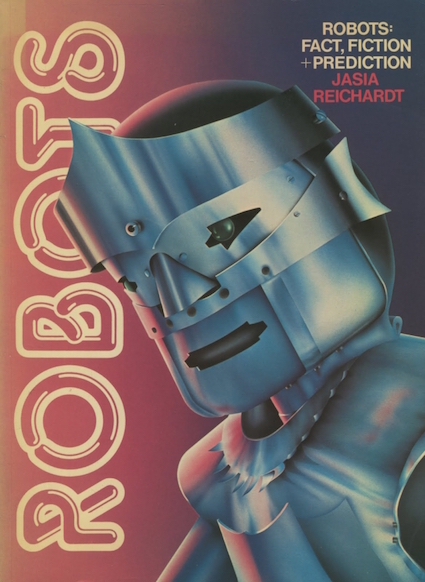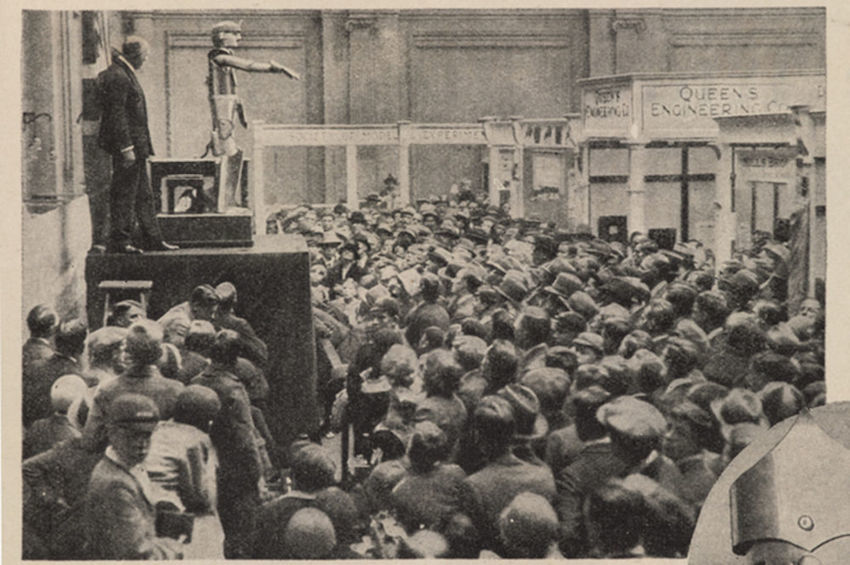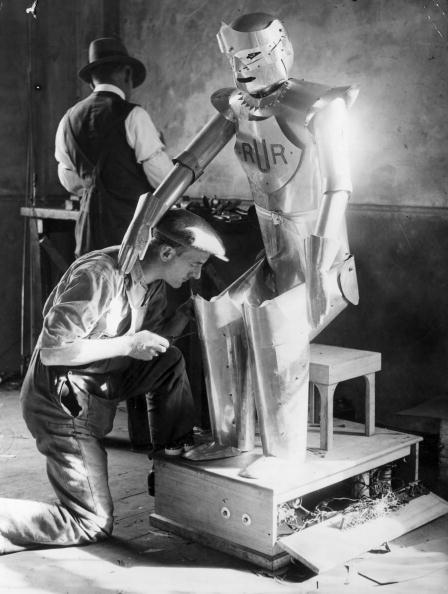Return of Eric - the first UK speaking robot
A curious project from the London Science Museum started on Kickstarter . The goal of the project is to restore the first UK speaking robot named Eric. This "iron man" was created and presented to the public in the distant 1928. He could sit, stand and move. But most importantly, Eric was able to talk. Human language, he answered the questions that he asked. Now, of course, the speaking technique will surprise few people, but in the late 20s the robot was a real sensation in Europe and the United States.

According to the museum curator Ben Russell (Ben Russell):
')
After the First World War, the industry switched to the production of consumer goods. The rise of industrialization encouraged scientists to create various mechanisms. Actually, during this period, the robot Eric appeared. He was created by war veteran captain William Richards (WH Richards).

Erik looked like a medieval knight in aluminum armor. His height reached 150 cm, and weight - 45 kg. He could sit, stand, wave his hands and speak. The speech was amplified by an electrical voltage of about 35,000 volts, as a result of which, during conversations, Eric "spat" sparks. The abbreviation “RUR” shone on his aluminum chest - a reference to the science fiction play “Rossumovi Univerzální Roboti” (“Rossum Universal Robots”), written by Czech writer Karel Čapek in 1920. By the way, it was from this play that the term “robot” was popularized.

Article in Popular Science for December 1928
Eric did not know how to think and had an arsenal of prepared answers to 50-60 questions. In other cases, he said: "I do not know, sir / madam." Richards also wanted to make the infrared eyes of the robot and add the ability to distinguish colors. But the idea remained unrealized.

Eric was a purely British robot - polite, erudite and with impeccable manners. He was even called the “quintessence of the Briton” at a press conference in New York. Richards traveled with his robot the whole world, gathering huge crowds of people. Eric was a success with the audience, speaking as a living embodiment of the ideas of science fiction.

An excerpt from an article published in the New York Times (February, 1929):

An excerpt of the dialogue at a press conference in New York, where Eric was called the perfect man:

Despite worldwide fame and success, Eric suddenly disappeared in the early 30s. And they never saw him again. It still remains a mystery whether it was stolen, lost or destroyed.

In 2002, a copy of Eric was created in Japan.
In order to fill in the gaps in the history of robotics and leave a legacy for new generations, the leaders of the London Science Museum launched a startup to raise funds for the restoration of Eric. A new sample is planned to be collected from materials and samples that are stored in the museum.

The creation of Eric # 2 was commissioned to robotics engineer Giles Walker. He has been creating multifunctional robots for music festivals for over 20 years. But most importantly, Giles has the experience of restoring old samples. The engineer has already made working drawings based on archival materials and discussions. According to his predictions, Eric may need about three months to recover.

Ben Russell with Giles Walker at work
Eric should appear at the exhibition of robots, which will be held from February to September 2017. After that, he, like his predecessor, will go on a world tour. Well, on his return, Eric will be an honorary exhibit of the permanent collection of the science museum.

According to the museum curator Ben Russell (Ben Russell):
Eric embodied all the qualities that we expected to see in robots. He was a moving and talking iron man.
')
After the First World War, the industry switched to the production of consumer goods. The rise of industrialization encouraged scientists to create various mechanisms. Actually, during this period, the robot Eric appeared. He was created by war veteran captain William Richards (WH Richards).
Erik looked like a medieval knight in aluminum armor. His height reached 150 cm, and weight - 45 kg. He could sit, stand, wave his hands and speak. The speech was amplified by an electrical voltage of about 35,000 volts, as a result of which, during conversations, Eric "spat" sparks. The abbreviation “RUR” shone on his aluminum chest - a reference to the science fiction play “Rossumovi Univerzální Roboti” (“Rossum Universal Robots”), written by Czech writer Karel Čapek in 1920. By the way, it was from this play that the term “robot” was popularized.

Article in Popular Science for December 1928
Eric did not know how to think and had an arsenal of prepared answers to 50-60 questions. In other cases, he said: "I do not know, sir / madam." Richards also wanted to make the infrared eyes of the robot and add the ability to distinguish colors. But the idea remained unrealized.

Eric was a purely British robot - polite, erudite and with impeccable manners. He was even called the “quintessence of the Briton” at a press conference in New York. Richards traveled with his robot the whole world, gathering huge crowds of people. Eric was a success with the audience, speaking as a living embodiment of the ideas of science fiction.

An excerpt from an article published in the New York Times (February, 1929):
Eric not only speaks, but also makes witty jokes in order to prove that in England even robots have a sense of humor. He blinded those present with his glittering (literally) blue-flame smile, gallantly shook the hands of men and bowed to the ladies.

An excerpt of the dialogue at a press conference in New York, where Eric was called the perfect man:
“Mr. Robot, do you drink or smoke?”
- No, I do not drink and do not smoke.
- Gambling?
- Not.
- Walking at night?
- Of course not.
- married or single?
- Single.

Despite worldwide fame and success, Eric suddenly disappeared in the early 30s. And they never saw him again. It still remains a mystery whether it was stolen, lost or destroyed.

In 2002, a copy of Eric was created in Japan.
In order to fill in the gaps in the history of robotics and leave a legacy for new generations, the leaders of the London Science Museum launched a startup to raise funds for the restoration of Eric. A new sample is planned to be collected from materials and samples that are stored in the museum.

The creation of Eric # 2 was commissioned to robotics engineer Giles Walker. He has been creating multifunctional robots for music festivals for over 20 years. But most importantly, Giles has the experience of restoring old samples. The engineer has already made working drawings based on archival materials and discussions. According to his predictions, Eric may need about three months to recover.

Ben Russell with Giles Walker at work
Eric should appear at the exhibition of robots, which will be held from February to September 2017. After that, he, like his predecessor, will go on a world tour. Well, on his return, Eric will be an honorary exhibit of the permanent collection of the science museum.
Source: https://habr.com/ru/post/393493/
All Articles